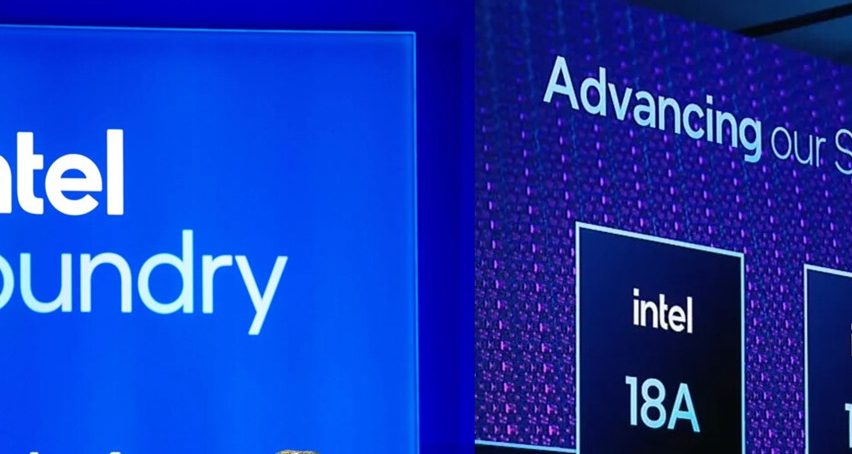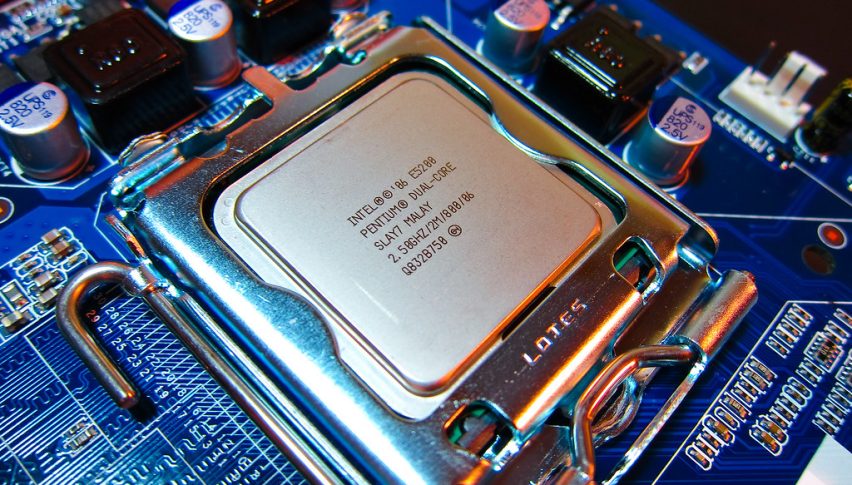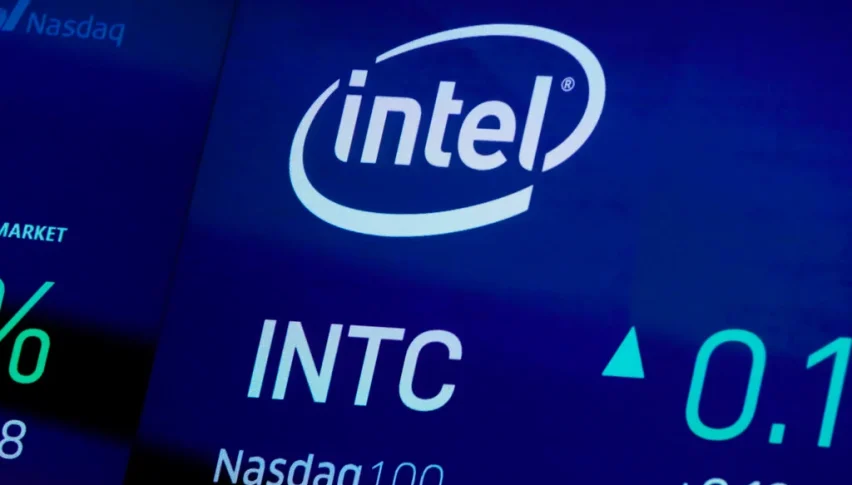Intel Stock Fails at Key Resistance Despite $2B Deal – INTC Back to $19?
Intel’s turbulent week highlights the fragile state of the semiconductor sector as investors weigh government support, private investment...

Quick overview
- Intel's stock fell nearly 7% after failing to break through the $26 resistance level, raising concerns about its recent bullish momentum.
- The U.S. government's potential conversion of part of the $10.9 billion Chips and Science Act support into an equity stake could significantly impact the semiconductor landscape.
- SoftBank's $2 billion investment in Intel shares was initially seen as a positive sign, but the stock struggled to maintain momentum amid broader market pressures.
- The overall semiconductor sector faces challenges due to global demand uncertainties and supply chain risks, leading to a cautious investor outlook.
Live INTC Chart
[[INTC-graph]]Intel’s turbulent week highlights the fragile state of the semiconductor sector as investors weigh government support, private investment, and technical resistance levels.
Sector Under Pressure
The broader technology sector endured a difficult trading day, with semiconductors leading losses. Nvidia slipped 2% and Broadcom dropped 2.3%, but Intel saw the steepest fall at nearly 7%. The decline followed a failed attempt to push above the $26 resistance zone, leaving the stock more than 12% below its peak of $26.53.
Intel Chart Daily – Failed at Resistance Again
Earlier momentum had pushed Intel’s share price higher, briefly reclaiming levels last seen in February. Yet the inability to hold above resistance, coupled with selling pressure around its 200-day moving average, sparked a reversal. The failed breakout not only erased recent gains but also raised fresh doubts about the sustainability of last week’s bullish momentum.
Policy Support in Focus
Adding complexity to Intel’s trajectory is the U.S. government’s consideration of converting part of the $10.9 billion Chips and Science Act support into an equity stake. A 10% federal ownership would amount to nearly $10.5 billion at current prices, signaling an unprecedented level of strategic involvement in domestic chip production. Such a move could reshape the competitive landscape for American semiconductors.
SoftBank’s Strategic Investment
Investor sentiment briefly turned positive when SoftBank announced a $2 billion purchase of Intel shares at $23 apiece. The deal was viewed as a vote of confidence in Intel’s long-term semiconductor strategy, particularly in advanced chip design and next-generation technologies. This triggered a strong rebound last week, with Intel logging a 23% gain, its best weekly rally since early spring.
Market Reaction and Share Performance
Despite the supportive headlines, the stock struggled to maintain momentum. Sellers regained control at critical resistance levels, pushing shares lower into Monday’s session. Still, Intel remains ahead on a weekly basis, underscoring the market’s tug-of-war between optimism over strategic investments and caution over short-term price pressures.
Broader Semiconductor Sentiment
The downturn in Intel also reflects a more cautious outlook across the semiconductor space. With global demand uncertainties, ongoing supply chain risks, and heavy reliance on cyclical sectors like consumer electronics, investors are increasingly questioning whether the recent tech rebound has legs.
Outlook and Risks Ahead
Intel’s future performance will depend on its ability to balance technical resistance levels with fundamental support from policy and private investors. If the stock manages to hold recent support zones, renewed upside momentum could emerge. However, failure to stabilize may deepen volatility in the semiconductor sector at large, setting the tone for tech markets in the weeks ahead.
- Check out our free forex signals
- Follow the top economic events on FX Leaders economic calendar
- Trade better, discover more Forex Trading Strategies
- Open a FREE Trading Account




